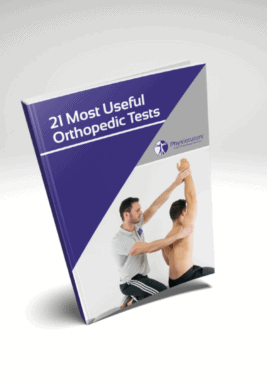Learn
Empty Can Test | Jobe Test | Assessment of Subacromial Pain Syndrome
In the 1970s and 80s, Neer coined the term shoulder impingement syndrome. According to his theory impingement occurs on the tendinous portion of the rotator cuff by the coracoacromial ligament and the anterior third of the acromion. We have made an elaborate video on this topic that you can check out later by a click on the following link.
According to a systematic review by Hegedus et al. (2012), the Empty Can Test had a sensitivity of 74% and specificity of 30% which would only minimally alter the post-test probability of subacromial pain syndrome (SAPS) and which is why we give it a weak clinical value as a standalone test.
To conduct the empty can test, the patient is in standing or sitting position. The arms of the patients are elevated to 90° in the scapular plane. The arms are then fully internally rotated so that the thumbs point toward the floor. The patient is then instructed to resist downward pressure applied by the examiner.
A positive test is indicated by weakness and/or pain in the affected arm compared to the unaffected side.
21 OF THE MOST USEFUL ORTHOPAEDIC TESTS IN CLINICAL PRACTICE

Other common tests to assess for subacromial impingement syndrome are:
Like what you’re learning?
BUY THE FULL PHYSIOTUTORS ASSESSMENT BOOK
- 600+ Pages e-Book
- Interactive Content (Direct Video Demonstration, PubMed articles)
- Statistical Values for all Special Tests from the latest research
- Available in 🇬🇧 🇩🇪 🇫🇷 🇪🇸 🇮🇹 🇵🇹 🇹🇷
- And much more!








